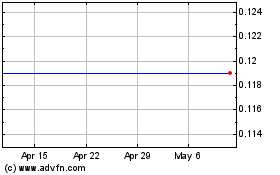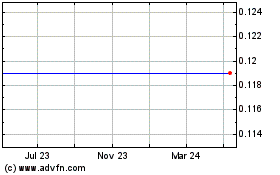Cellectar Biosciences (Nasdaq: CLRB), a clinical-stage
biopharmaceutical company focused on the discovery, development and
commercialization of drugs for the treatment of cancer, today
announced median overall survival (mOS) in Cohorts 1-4 of the
company’s ongoing Phase 1 clinical trial evaluating CLR 131 for the
treatment of relapsed/refractory (R/R) multiple myeloma (MM). The
results showed mOS of 22.0 months among 15 patients, all of whom
were heavily pretreated, averaging five prior lines of systemic
therapy. Each patient in Cohorts 1-4 of this dose-escalation study
received a single 30-minute infusion of CLR 131.
All patients enrolled in Cohorts 1 through 4 were previously
treated with both proteasome inhibitors and immunomodulatory drugs,
and experienced disease progression with greater than one-third
dual refractory. While no head-to-head studies have been conducted
between CLR 131 and other therapies in this heavily pretreated
population, for background purposes, a 2016 article published in
the journal Bone Marrow Transplantation refractory to both
proteasome inhibitors and immunomodulatory drugs achieve mOS of 9
months.1 Additionally, mOS for R/R MM patients receiving treatment
in third line averages approximately 12 months of survival,
including several recently approved drugs.2,3
“The median overall survival of 22 months in this heavily
pretreated patient population is very encouraging. These are
patients with limited therapeutic options and, unfortunately, face
poor prognoses,” said James Caruso, president and chief executive
officer of Cellectar Biosciences. “The convenience afforded by CLR
131 delivered in only one or two doses as currently administered in
our ongoing hematology studies makes it a far less intrusive
regimen than other treatments that must be administered at regular
dosing intervals. We believe extending mOS with a more
patient-friendly dosing regimen provides both a distinctive product
profile and the potential to provide beneficial patient outcomes
even in later lines of therapy.”
1. R.F Cornell and A.A. Kassim (2016). Evolving paradigms in the
treatment of relapsed/refractory multiple myeloma: increased
options and increased complexity. Journal of Bone Marrow
Transplantation2. Jurczyszyn et al (2014). New drugs in multiple
myeloma – role of carfilzomib and pomalidomide. Contemporary
Oncology3. Dimopolous et al (2016). Safety and efficacy of
pomalidomide plus low-dose dexamethasone in STRATUS (MM-010): a
phase 3b study in refractory multiple myeloma. Blood Review
About the Phase 1 R/R MM TrialThe objective of
this multicenter, open-label, Phase 1 dose-escalation study is the
characterization of safety and tolerability of CLR 131 administered
either as a single-dose or split-dose, 30-minute infusion(s) in
patients with R/R MM. In Cohorts 1-4, patients received doses of
12.5 mCi/m2 up to 31.25 mCi/m2. All doses were deemed safe and well
tolerated by an independent Data Monitoring Committee (DMC). All 15
patients were heavily pretreated, receiving an average of five
previous lines of multidrug therapy including anti-CD38,
immunomodulating drugs and proteasome inhibitors. All patients were
relapsed or refractory to at least one proteasome inhibitor and
IMiD. Most patients presented with advanced stage 2 or 3 disease
and 67% had previously received at least one stem cell transplant.
Data from Cohort 5, released in August 2018, evaluated a split
or fractionated dose of 31.25 mCi/m2 for tolerability and safety.
The dosing schedule provided higher average drug exposure but lower
peak serum levels than non-fractionated dosing, potentially
reducing adverse events and improving efficacy. The DMC determined
the fractionated dose used in Cohort 5 to be safe and well
tolerated, and recommended advancement to a higher dose cohort.
In December 2018, Cohort 6 was initiated. Cohort 6 will evaluate
up to four patients with each receiving two doses of 18.75 mCi/m2
of CLR 131 administered one week apart. This fractionated dosing
regimen will result in each patient being treated with a total of
approximately 75.0 mCi of CLR 131, representing an increase in
average total exposure of greater than 15% over Cohort 5.
About CLR 131CLR 131 is Cellectar’s
investigational radioiodinated phospholipid ether-drug conjugate
(PDC™) therapy that exploits the tumor-targeting properties of the
company's proprietary phospholipid ether (PLE) and PLE analogs to
selectively deliver radiation to malignant tumor cells, thus
minimizing radiation exposure to normal tissues. CLR 131 is in a
Phase 2 clinical study in R/R MM and a range of B-cell
malignancies, and a Phase 1 clinical study in patients with R/R MM
exploring fractionated dosing.
The objective of the multicenter, open-label, Phase 1
dose-escalation study is the characterization of safety and
tolerability of CLR 131 in patients with R/R MM. Patients in
Cohorts 1-4 received single doses of CLR 131 ranging from 12.5
mCi/m2 to 31.25 mCi/m2, as well as a fractionated dose of 15.625
mCi/m2 given twice over seven days in Cohort 5. Cohort 6 will
evaluate up to four patients with each receiving two doses of 18.75
mCi/m2 of CLR 131 administered one week apart. This fractionated
dosing regimen will result in each patient being treated with a
total of approximately 75.0 mCi of CLR 131, representing an
increase in average total exposure of greater than 15% over Cohort
5. All study doses and regimens have been deemed safe and well
tolerated by an independent DMC. The company plans to initiate a
Phase 1 study with CLR 131 in pediatric solid tumors and lymphoma,
as well as a second Phase 1 study in combination with external beam
radiation for head and neck cancer.
About Phospholipid Drug Conjugates™Cellectar's
product candidates are built upon a patented delivery and retention
platform that utilizes optimized PDCs to target cancer cells. The
PDC platform selectively delivers diverse oncologic payloads to
cancerous cells and cancer stem cells, including hematologic
cancers and solid tumors. This selective delivery allows the
payloads’ therapeutic window to be modified, which may maintain or
enhance drug potency while reducing the number and severity of
adverse events. This platform takes advantage of a metabolic
pathway utilized by all tumor cell types in all cell cycle stages.
Compared with other targeted delivery platforms, the PDC platform’s
mechanism of entry does not rely upon specific cell surface
epitopes or antigens. In addition, PDCs can be conjugated to
molecules in numerous ways, thereby increasing the types of
molecules selectively delivered. Cellectar believes the PDC
platform holds potential for the discovery and development of the
next generation of cancer-targeting agents.
About Cellectar Biosciences, Inc.Cellectar
Biosciences is focused on the discovery, development and
commercialization of drugs for the treatment of cancer. The company
plans to develop proprietary drugs independently and through
research and development (R&D) collaborations. The core drug
development strategy is to leverage our PDC platform to develop
therapeutics that specifically target treatment to cancer cells.
Through R&D collaborations, the company’s strategy is to
generate near-term capital, supplement internal resources, gain
access to novel molecules or payloads, accelerate product candidate
development and broaden our proprietary and partnered product
pipelines.
The company's lead PDC therapeutic, CLR 131, is in a Phase 1
clinical study in patients with R/R MM and a Phase 2 clinical study
in R/R MM and a range of B-cell malignancies. The company plans to
initiate a Phase 1 study with CLR 131 in pediatric solid tumors and
lymphoma as well as a second Phase 1 study in combination with
external beam radiation for head and neck cancer.
The company’s product pipeline also includes one preclinical PDC
chemotherapeutic program (CLR 1900) and partnered assets including
PDCs from multiple R&D collaborations.
For more information please visit www.cellectar.com.
Forward-Looking Statement DisclaimerThis news
release contains forward-looking statements. You can identify these
statements by our use of words such as "may," "expect," "believe,"
"anticipate," "intend," "could," "estimate," "continue," "plans,"
or their negatives or cognates. These statements are only estimates
and predictions and are subject to known and unknown risks and
uncertainties that may cause actual future experience and results
to differ materially from the statements made. These statements are
based on our current beliefs and expectations as to such future
outcomes. Drug discovery and development involve a high degree of
risk. Factors that might cause such a material difference include,
among others, uncertainties related to the ability to raise
additional capital, uncertainties related to the disruptions at our
sole source supplier of CLR 131, the ability to attract and retain
partners for our technologies, the identification of lead
compounds, the successful preclinical development thereof, the
completion of clinical trials, the FDA review process and other
government regulation, the volatile market for priority review
vouchers, our pharmaceutical collaborators' ability to successfully
develop and commercialize drug candidates, competition from other
pharmaceutical companies, product pricing and third-party
reimbursement. A complete description of risks and uncertainties
related to our business is contained in our periodic reports filed
with the Securities and Exchange Commission including our Form 10-K
for the year ended December 31, 2017 and our Form 10-Q for the
quarterly period ended September 30, 2018. These forward-looking
statements are made only as of the date hereof, and we disclaim any
obligation to update any such forward-looking statements.
CONTACT: LHA Investor RelationsMiriam
Weber Miller212-838-3777mmiller@lhai.com
Cellectar Biosciences (NASDAQ:CLRBZ)
Historical Stock Chart
From Oct 2024 to Nov 2024

Cellectar Biosciences (NASDAQ:CLRBZ)
Historical Stock Chart
From Nov 2023 to Nov 2024
